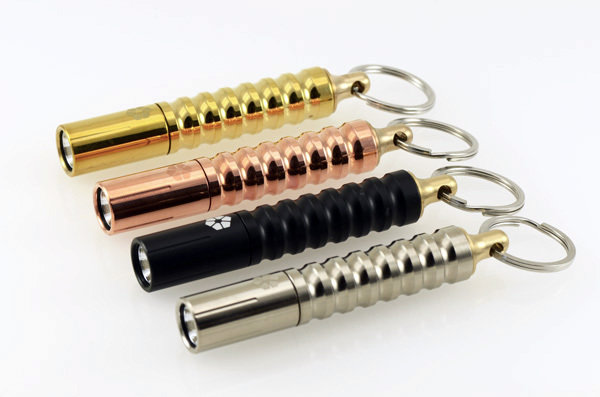BackerKit (re)Invite & Run-Time Testing
about 11 years ago
– Wed, Nov 06, 2013 at 07:13:09 AM
BackerKit Invites: Round #2
Hi all,
I sent out an new round of invites a couple hours ago to the 383 people who have not completed their BackerKit registration and/or filled out the BackerKit survey. If you are receiving this update via email, then you "should" receive the BackerKit invite, because it goes to the same email address. Please keep in mind, filling out BackerKit is mandatory because this replaces the standard Kickstarter survey.
If you don't receive an invite in the next 24 hours or so, please email [email protected] . About all I can do on this end is push the "invite" button over and over :)
Run-Time Testing!
ANSI FL1 is a voluntary standard (set forth by the American National Standards Institute) that flashlight companies can use to report the performance of their flashlights. This is intended to make "apple to apples" comparisons easier. However, since the standard is voluntary, there is no independent oversight about the accuracy of manufacturer's claims.
Many flashlight companies inflate or completely fabricate their test results, and that is a disservice to customers and the industry in general. The main thing that sets top-tier companies apart from the rest is accurate reporting, not performance. It's very hard to compete with companies who just make up the numbers. In general, I really do my best to err on the side of under-reporting my performance numbers because I like to deliver what I promise. That doesn't make me perfect and I revise performance figures based on new information. Sometimes that means they go down, but it also means they can go up!
My brand reputation is built on quality, transparency, and accurate reporting, so I want to show you my Run-Time test results for the 2 mode driver and provide some other disclosures. Not big stuff, just FYI.
- The run-time figures of the 3 mode are calculated, based on the physical measurements taken from the 2 mode driver. I have not physically tested the 3 mode driver for run-time, but when I do, I'll post updated figures to my website.
- Both the 2 mode and 3 mode have been physically tested for lumens output
- I don't (in most cases) physically run-time test anything other than "high mode" because I don't have automated measuring equipment that will monitor the test for hours on end. I have to stand there with a stopwatch.
- The run times for medium and low (listed in the campaign) have also been calculated and not directly measured. I've used this method in the past, and found that the actual run-times of medium and low modes tended to exceed the calculated run-times. Your mileage may vary.

The first thing you might notice from the graph is that the Alkaline battery performance drops off really fast...but you should not be using them anyway (see below). The second thing you should look at is the red "depleted" line at the bottom. This represents that magic 10% number that ANSI sets forth. The Alkaline squeaks in at the 60 minute mark, but the other two options provide robust performance.
It's clear that if you want to get the most out of your Beta-QR, you should choose Eneloop Ni-Mh rechargeable batteries, or the Lithium disposables. For my money, the rechargeable is a no-brainer. In fact, there is no reason you should be using disposable AAA or AA batteries in 2013...no reason at all. Click here to see a blog post I did on Eneloop batteries almost 2 years ago.
Note #1: If you want to use the "lithium disposable" battery, this is the kind of lithium you can buy at the drug/hardware store that's designed for "performance" electronics like cameras...and is disposable. THIS IS NOT a li-ion rechargeable battery. Li-ion CANNOT be used in the Beta-QR. If you are still thinking about using disposable batteries, you might check out my other blog post on the "cost of ownership" for a flashlight.
Note #2: The lines do not overlap at the 0-15 minute mark because I separated them so you can see each line. The difference is NOT related to the performance of the battery, and the purpose of the chart is to look at the run time, not the output.
Note #3: The ANSI standards require a sample size of 5 lights and the measurements get averaged. What this means is that every single light will have different brightness and different run time, and it's statistically probable that your light will fall outside the "stated" range...maybe above...or maybe below.

